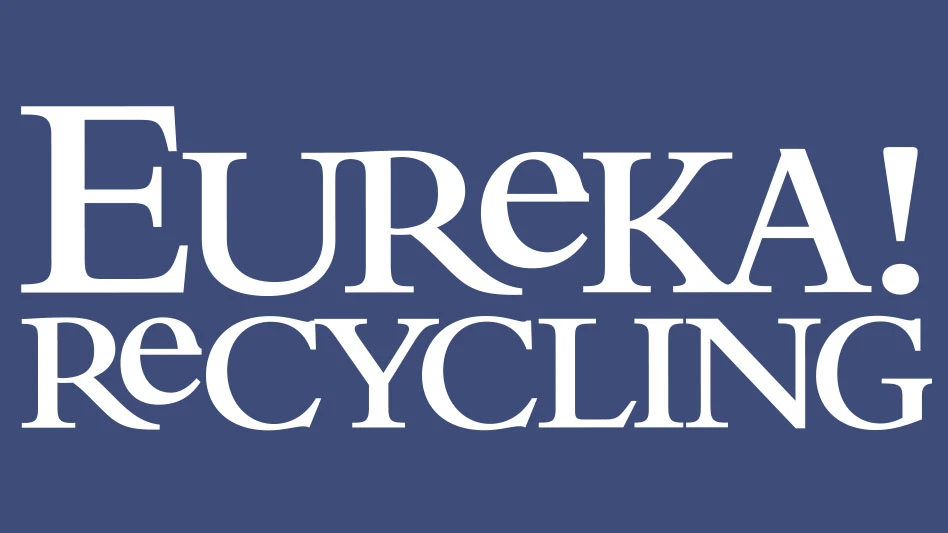 One of the leading causes of conveyor belt failures in recycling facilities is poor maintenance. Properly operating conveyor belts are critical to the smooth operation of any recycling facility. Poor maintenance can cause a catastrophic failure or shorten the life of the conveyor belt, resulting in lost productivity and revenue and increased operating costs. Proper maintenance is a cost-effective method to ensure your plant stays operational.
One of the leading causes of conveyor belt failures in recycling facilities is poor maintenance. Properly operating conveyor belts are critical to the smooth operation of any recycling facility. Poor maintenance can cause a catastrophic failure or shorten the life of the conveyor belt, resulting in lost productivity and revenue and increased operating costs. Proper maintenance is a cost-effective method to ensure your plant stays operational.
Proper maintenance starts with understanding your system and its maintenance requirements. The original equipment manufacturer (OEM) should have provided a manual detailing the maintenance requirements of the system. It is important for all maintenance employees to understand the reasons why the OEM requires certain maintenance tasks and what may happen if this maintenance doesn’t occur properly.
Getting off track
All maintenance personnel should make it a habit to pay attention to the tracking of all conveyor belts throughout the system as the belt is an indicator of an issue within the system. Misaligned belts can be the result of:
- belt camber;
- a misaligned pulley or idler;
- an out-of-square system;
- an out-of-square splice;
- off-center loading; or
- a dirty system.
Noticing and diagnosing the problem quickly can prevent damage to the belt and system. Failure to catch and correct the issue can lead to the edge of the belt catching and ripping, necessitating a complete belt replacement. If the belt is tracking off on the same part of the conveyor system during operation, it is most likely a systems issue. If the same section of belt is tracking off regardless of where it is on the system, it is most likely a belt issue. Let’s take a closer look at the possible causes of misaligned belts.
Belt camber. Camber, or an upward curve in the middle of the belt, is a common issue with conveyor belting created by how the belt is stored or by unequal tension in the fabric plies. Most of the time a belt camber can be pulled out of the belt when installed on a system under tension; it may take a few days of running the belt for the camber to relax and for the belt to run square. If after tensioning the belt and allowing it to run the camber hasn’t pulled out of the belt, the belt may need to be replaced.
Misaligned pulleys or idlers. A conveyor belt is going to move in the direction it is first contacted, therefore a pulley or idler that is not square with the system is giving false direction to the belt. Pulleys and idlers can become misaligned because of personnel accidently hitting conveyors with forklifts, maintenance personnel adjusting them inappropriately to control belt tracking or loose hardware that has allowed the components to move. Checking the condition of idlers and pulleys, verifying alignment and inspecting for damage should be part of any routine maintenance program.
An out-of-square system. The conveyors in a recycling facility are typically stacked on top of each other, with loaders and other equipment operating within the base structure. Hitting a supporting leg or other part of the structure is not uncommon. When contact with the system occurs, it is critical to inspect the entire system to ensure it is still square and the belt is not having issues tracking. An out-of-square system will cause problems for the belt, idlers, pulleys, bearings and other components.
An out-of-square splice. Conveyor belts are joined at the ends with either a mechanical or vulcanized splice. Either of these splices can be installed out of square with the belt, which will cause that section of belt to mistrack. To check if the splice is square, from each end of the belt measure across the belt width to determine the exact center of the belt. Do this three to four times on each end of the belt, then use a square aligned along the center line you created to draw a straight line across the belt, just below the splice. Do not use the square against the edge of the belt to draw the straight line, as the belt edge from the factory may not be perfectly straight. If the splice is confirmed to be out of square, it will need to be cut out of the belt and replaced with a new splice.
Off-center loading. A conveyor system is designed to have the material conveyed equally dispersed from the center of the belt out toward the edges. Loading the belt more toward either edge will cause the belt to shift on the system, potentially leading to belt edge damage or complete loss of the belt.
Dirty idlers, rollers and pulleys or foreign material. Buildup of foreign material on components will result in the belt tracking off as it moves in the direction it was first contacted. Keeping the system components clear is essential to a finely operating system. The maintenance crew should be inspecting for and cleaning buildup on a regular basis. Belt scrapers and cleaners can be installed to help keep systems clean.
Addressing additional factors
Other factors can affect the health of your conveyor belt and shorten or lengthen its overall life, including the skirtboard, rubber compound and lace style and material. Let’s take a closer look at these factors.
Skirtboard material. Skirtboard material is a cost-effective method to keep material on the belt and to prevent it from getting under the belt. Foreign material under a belt on a slider bed can damage the fabric plies and lace and cause tracking issues. Using the correct skirtboard material is essential to the health of your belt. Skirtboard material is a 60-durometer or softer material, specifically engineered to wear away when in contact with the harder durometer material of the belt. Using old conveyor belting will cause unnecessary damage to the belt, as the fabric plies act as a knife, cutting through the rubber cover and fabric of your belt.
Rubber compounds. The most typical type of rubber conveyor belt found in a recycling facility is MOR (moderately oil resistant). This compound can withstand occasional contact with oils while providing the impact and abrasion resistance needed for the environment. Facilities processing materials with high levels of oils will need to consider going with an HTA (high-temperature) or SOR (superior oil resistant) belt. Facilities with highly abrasive materials, such as glass cullet, may want a Grade I PVC (polyvinyl chloride) or urethane belt, which provide increased abrasion, gouge and cut resistance.
Lace style and material. Many different styles of mechanical lace are available with different metal compounds. The preferred lace for each conveyor system will be determined by the pulley diameter, belt tension rating and belt thickness. Using the proper sized lace style is recommended to create the least amount of damage to the belt carcass and to decrease the likelihood of the lace pulling out. A solid spring wire or armored covered pin is recommended over a nylon-coated cable because of the abrasive nature of the material wearing away the nylon. Additionally, in light of this abrasive environment, stainless steel or megalloy lace is recommended to prevent premature failure of the lace.
Getting a hand
Time is the enemy of any maintenance crew; there is never enough of it. Partnering with a local industrial distributor that specializes in conveyor belting could be a potential solution because the industrial distributor can serve as a part of your maintenance team. A local member of Milwaukee-based NIBA-The Belting Association is a good start to finding a distributor that can be your knowledgeable belt expert, working with you to review and identify areas for improvement that can lengthen your belt life, minimize the risk for catastrophic failure and decrease maintenance costs over time.
Laura Hoggan is vice president of Vancouver, Washington-based Rubber & Plastics Inc. (RPI), a manufacturer of custom heavy-duty cleated and sidewall rubber conveyor belts, rubber extruded profiles and molded parts and PVC and urethane conveyor belts. She serves on the board of directors for NIBA-The Belting Association and on the Conveyor Belt Subcommittee for ARPM (Association for Rubber Products Manufacturers). She can be contacted at lhoggan@conveyorbelt.com.

Explore the November 2015 Issue
Check out more from this issue and find your next story to read.
Latest from Recycling Today
- Sofidel agrees to purchase Royal Paper assets
- US Plastics Pact report charts expansion path for recycled content in packaging
- USTR announces phased measures designed to address China’s shipbuilding dominance
- APR, RecyClass release partnership progress report
- Clearpoint Recycling, Enviroo sign PET supply contract
- Invista expanding ISCC Plus certification program
- Redwood partnership targets recycling of medium-format batteries
- Enfinite forms Hazardous & Specialty Waste Management Council





